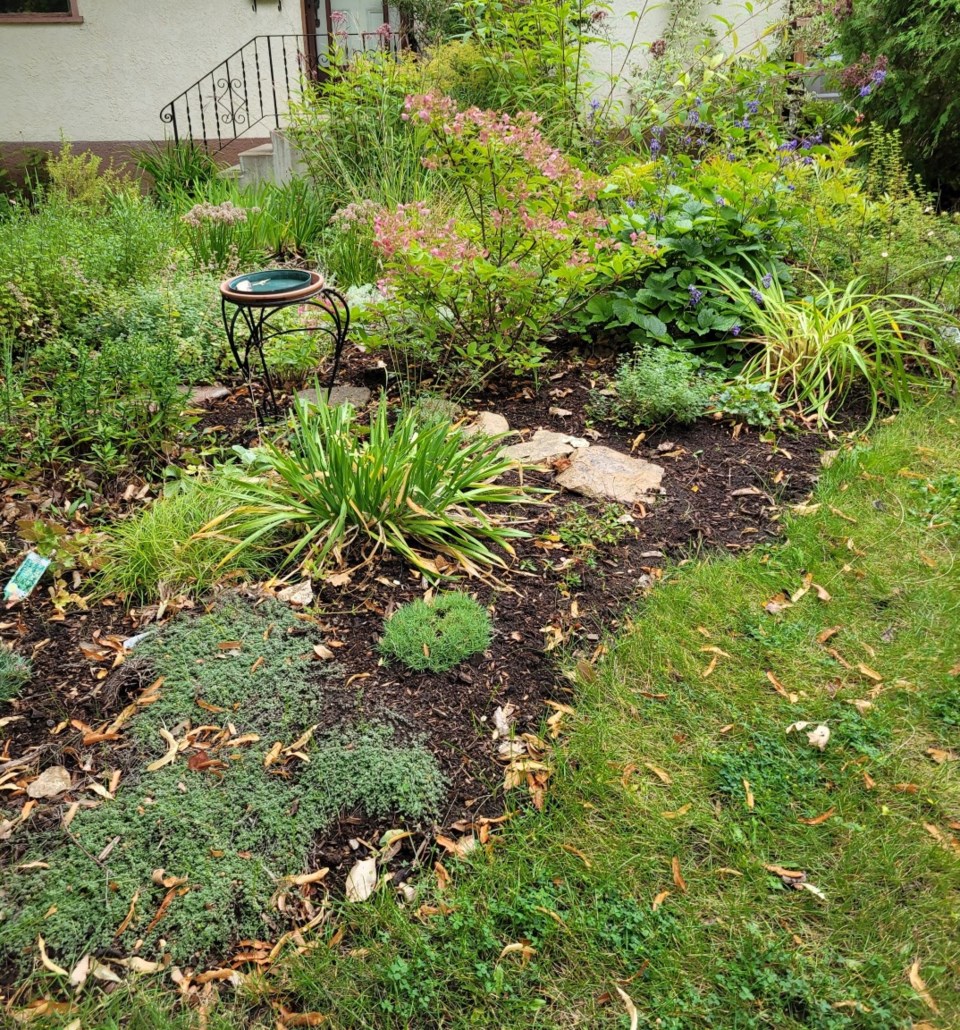In retirement, many of us have gone deep into gardening as a pleasant way to keep active and spend quality time outdoors and in nature. Lawns were turned into perennial borders, vegetable gardens were tended and many of us added to or began extensive plant collections. And, just as we seem to attain that perfect landscape, another change is thrust upon us. The realization that we may not be able to maintain this level of activity.
There are two approaches to downsizing, both of which require us to give up a measure of control. We have to let go and give up some of what we love doing. The good thing is we don't need to do this all at once, we can make gradual changes.
The first approach is to hire out and let someone else do the heavy lifting. This plan can become expensive and may not fit in everyone's budget, depending on the scope of the work. Perhaps all you can afford is a lawn service in which case you might consider turning some of your garden back into lawn. The second approach is to simplify your landscape to such an extent that you can manage the work yourself with minimal outside help. Either way, there is a need to assess what you have and what you require to continue to be happy in your outdoor space.
Every situation is unique so there is no one-size-fits-all plan. We are often told that pots are high maintenance and shrubs are easier to care for than perennials. Everyone needs to assess their situation.
Here is my three or five-year downsizing plan. Perhaps it will give you ideas on how to simplify your little oasis.
My front right border has a juniper which competes with a daylily, irises, Miscanthus grass and a spirea. This year I removed the irises, which needed dividing every three to four years because grasses tend to mix in with their root system. In spring, the daylily will be moved to a new border in the backyard. This leaves the spirea, juniper and grass to fight it out. Most probably the juniper will take over any space created. In the meantime, this area will be mulched with cedar mulch.
The central perennial bed was a relatively late addition to my garden, but already I have noted some perennials which are all too aggressive. The Tradiscantia or spiderwort, received from a dear friend, has overstayed its welcome and choked out some more desirable Heuchera. I have replaced it with some flat rocks to act as a path, making nearby perennials easier to access and weed. In the past five years, I have top-dressed this bed with compost. Next year the plan is to top-dress with compost one more time, add a soaker hose and then mulch.
The hosta bed between my Linden tree and Amur maple is mulched and pretty much maintenance-free.
I added a soaker hose to a side border which parallels the driveway, which made watering a breeze. This bed might lose some fall colour in the next couple of years, as I will try and eradicate the ostrich fern as well as the false sunflower (Heliopsis helianthoides) which self-seeds readily, even in a mulched border. I will probably replace these with daylilies, which require less care in the fall. Currently, I have to cut down the sunflowers to allow for space to shovel my snow in winter.
In the backyard, I dug up the raspberries that were located in a dappled shade. This fall I planted bulbs here along with some Solomon's seal roots and a rose bush. In spring, I might add the daylily from the front yard and a bleeding heart. The raspberries in the sunny location will be replaced with haskaps, which are much better behaved, and still provide some fruit, for either the birds or the gardener.
The pond will eventually be filled in with soil. I will keep the liner in to create a damper area, which might be great for Ligularia or Astilboides tabularis, which would never flourish for me but might do better in a damper location.
Here I am, hoping for many more years of gardening.
This column is provided courtesy of the Saskatchewan Perennial Society (SPS; [email protected]). Check our website () or Facebook page () for a list of upcoming gardening events.




